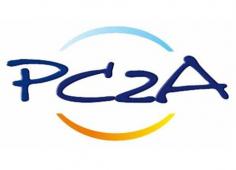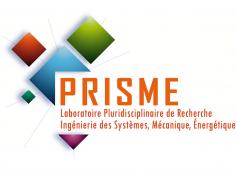Ammonia combustion in water vapour presence : impact on NOx emissions
| Exploratory project of the CNRS Energy unit | |
| Duration ► | 12 months |
| Start ► | January 2022 |
Context
To achieve the carbon neutrality objective in 2050, the demand for electricity will be greatly increased in order to meet the energy needs for transport and heating/cooling systems. To this end, most countries consider clean renewable energy resources (such as wind and solar) as the main energy resources of the future. However, due to their intermittency, and in order to maintain a secure electricity supply, energy storage will need to be an integral part of the modern smart grid. One way to store excess renewable energy is electro-chemical storage, mainly hydrogen (H2). However, hydrogen, the "simplest" e-fuel, suffers from some drawbacks such as its storage and the safety associated with its use.
To overcome this drawback, ammonia is initially considered as a H2 storage vector, due to its advantages over hydrogen such as its lower cost per unit of stored energy, its higher volumetric energy density , its liquid phase obtained by compression at 0.9 MPa at ambient temperature. Ammonia production, handling and distribution capacity is easier and more extensive, well-established and reliable infrastructure already exists for ammonia storage and distribution (including pipeline, rail, road, ship).
In addition to being a hydrogen storer, ammonia can also be used as a fuel. Until now, ammonia has been introduced mainly as an addition to carbonaceous fuels in order to partially decarbonize energy systems (such as gas turbines, industrial furnaces or internal combustion engines). In order to achieve totally carbon-free systems, pure ammonia combustion is increasingly considered. However, to counteract the NH3 high ignition temperature and its low flammability (a positive safety characteristic), most of the envisaged applications rely on partial, preliminary or in-situ thermal cracking of NH3 into N2 and H2.
The lack of knowledge concerning the NH3 oxidation chemistry but also of the induced emissions such as NOx and the potential release of unburnt NH3 currently constitute a brake on the development and optimization of NH3 combustion. However, NH3 oxidation chemical kinetics have aroused interest for decades on two aspects. Ammonia is indeed one of the VOCs resulting from solid fuels combustion and contributes to NO formation in the fuel. It is also used as a reducing agent in NO thermal-deNOx methods (SNCR: selective non catalytic reduction).
Ammonia oxidation kinetics modeling is also based on experimental laboratory data, such as fundamental flame velocities and autoignition times. However, measurements of chemical species and reaction intermediates in a varied range of pressures and temperatures are essential, but very rare in ammonia flame conditions, for a better understanding of ammonia oxidation and to refine kinetic models, for more predictive simulations to help design and optimize industrial applications.
To our knowledge, very few experiments in flame conditions with NH3 or NH3/H2 mixtures are reported in the literature. To date, no system based on pure NH3 combustion (such as gas turbine, industrial burner, internal combustion engine, etc.) can ensure high yields while maintaining the lowest possible environmental impact.
Objectives
Our objective, through the 1-year DeNOx-NH3-H2O project, is to initiate studies on ammonia combustion, still unexplored, focused on nitrogen monoxide emissions component, which is one of the known and major disadvantages of NH3 combustion.
In flame conditions, the pathways of NO formation during NH3 combustion are the so-called “fuel NO” and “thermal NO” mechanisms. Thus, the detailed kinetic models predict a reduction in NO emissions when passing from a lean or stoichiometric combustion towards a rich combustion in NH3, but this reduction is accompanied by a strong increase in unburned NH3 emissions.
One considered way (used for example in H2 combustion) to lower the NO emissions from NH3 combustion consists in injecting steam into the premix. On the one hand, this addition would generate an increase in OH radicals and would shift the equilibrium of the N+OH=NO+H reaction (consumption of NO) and on the other hand a widening of the operating range of the reduction methods not NO catalysts (thermal-deNOx); the residual NH3 in the emission gases would thus make it possible to reduce NO .
To date, this last hypothesis has been verified experimentally under "MILD combustion" conditions (Moderate and Intense Low-oxygen Dilution) which makes it possible to reduce the burnt gases rise in temperature and to reduce NOx formation. But the consequences of adding small amounts of water vapor to the initial gas premix under flame conditions is not documented. In all cases the kinetic processes are strongly dependent on the temperature and the reaction equilibria.
This exploratory project will revolve around experiments carried out on an “academic” burner (at PC2A) and on an internal combustion engine (at PRISME). We will focus our efforts on three objectives:
- find a wide range of operating conditions on the burner to obtain good flame stability. Variable parameters considered for this project are the richness, the dilution rate, the H2O added to the fuel/oxidizer mixture fraction , and possibly H2 addition.
- for each condition selected, precisely determine the impact on NOx emissions.
- Check the potential for adding water vapor to a single-cylinder engine by measuring exhaust emissions under possible operating conditions.
Partners
The project will be organized on 2 sites. At PC2A, premixed and laminar ammonia flames will be stabilized on a so-called flat flame burner. At PRISME laboratory, a single-cylinder internal combustion engine of spark ignition type is available. On both sites, the NO species can be measured either by laser-induced fluorescence (LIF) along the flame (PC2A), or at the engine exhaust (PRISME) by FTIR. The combustion equipment (burner and engine) is ready to operate to “burn” ammonia.
Work Plan
The work program seems feasible in 1 year. The 2 teams involved in the project have recognized experience in flame stabilization and engine combustion (PRISME) [e.g. Lhuillier et al., Proceedings of the Combustion Institute 38(4), 2021, 5859-5868] and in chemical kinetics and nitrogen compound formation modeling and associated experimental techniques (PC2A) (including Laser Induced Fluorescence (LIF) diagnosis of NO) [e.g. Lamoureux et al. Combustion and Flame, 157, 1929-1941, 2010].
To guarantee the success chances, this project was prepared in advance, particularly in terms of the configuration and preparation of a burner and the single-cylinder engine as well as their ammonia supply. As part of this project, the addition of steam will be implemented on existing experimental facilities. In addition, the recruitment of an M2 level intern for a period of 6 months will ensure a good part of the realization of the experiments but also to make the candidate aware of carbon-free combustion. The perspectives of this work are discussed at the end of the document.
The assessed risk for this PEPS would be to have a negligible effect of H2O addition on NO under flame conditions. But if this is the case, this perspective deserves to be evaluated because it is considered “positive” with certain kinetic models.
Expected Results
This PEPS project will allow us to initiate research on ammonia combustion (without carbonaceous co-fuel) with a view to long-term establishment on a national and international level in this research segment. Of course, "carbon" neutrality must be assessed throughout the entire process: from ammonia synthesis to its combustion. The "clean" ammonia synthesis is outside the scope of this project but is feasible.
As part of this project, we are going to scan a wide range of operating conditions which will guide us in the selection of the most relevant in the short and medium term. Each selected condition will later be completed with measurements (in flame) of radical and atomic species (NH, OH, H, O) in addition to NO and NH3 in order to obtain a detailed and unique database at the international level allowing us to develop and validate a detailed mechanism of NH3 oxidation. The more global measurements at the exhaust of an engine but with a follow-up of all the species containing nitrogen will make it possible to bring lines of questioning. This database in "academic" and engine condition will be crucial for the validation of kinetic schemes of ammonia oxidation. In engine condition, a simple Model 0D type modeling will make it possible to evaluate the response of the current kinetic schemes and those developed by the PC2A on this addition of H2O and their prediction with regard to NOx emissions.
Contact : Christine ROUSSELLE ⇒ christine.rousselle@univ-orleans.fr



